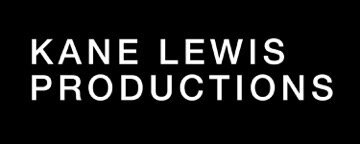LESSON PLAN 2
ABSTRACTING THE WORLD OF WORK:
CREATING A RELATIONSHIP WITH THE SUBJECT
Time: 11-18 hours
DESCRIPTION / OBJECTIVES:
Through a study of a variety of careers and work environments, students will document and create imagery and compositions that reflect their personal observations of people engaged in work. The compositions will emphasize the relationship of the figure with his/her environment. Students will engage in a creative process that will lead to an original, abstract painting that addresses the subject with a selected painting medium using bold brushstrokes to develop forms.
MATERIALS:
• Paper
• 9”x12” for 5-8 preliminary paintings
• Heavy-weight 18”x24” for final painting• or Primed Canvas: 18”x24”
• Gesso for priming paper (optional)
• Pencil
• Black fine line marker
• Variety of Brushes: large bamboo, medium and large round & flat
• Paint: Tempera or Acrylic
• Acrylic Matt Medium (if using Acrylic paint)
• Masking Tape
• Pace Painting Images: 12, 13, 37, 46, 47, 57, 58, 59, 60, 61, 62, 65, 66
PROCESS:
1.Research and Document regional industry (3-6 hours)
• Interview family and/or community members about their work
• Visit sites of local industry
• Participate in a job shadow
• Take photographs or make sketches of people engaged in their work
• Record information
2. Draw what you saw! (1-1/2 hours)
• Return to the Art Studio and create three, quick, 9”x12” sketches from photographs and on-site sketches. “I don’t paint what I see. I paint what I saw.” –S. Pace
• Select images or sections of the images – compositions that use the space effectively. Look for repeated or similar shapes, lines and colors. Consider the relationship of the figure (organic) in the structured (geometric) environment, and the shapes and lines with the edges of the 9x12 space.
• Identify the positive and negative shapes in each of the sketches and draw a contour line around each shape with a black fine-tip marker. Explain your decisions to the class or smaller group.
3. Using local color (the natural color of objects) (2-3 hours)
• Refer to the three selected photographs/sketches and examine the colors. Are they repeated or similar? Do you see complimentary colors?
• Identify and mix the major colors. Select a limited pallet (2-4) colors from specific color harmonies: Complementary, Analogous, Triad, Tetrad or Split-complement. Black and white may be used and mixed with pure hues to achieve tints and shades.
• Transfer each of the three line compositions to clean sheets of paper. Use light pencil lines that can be easily covered with paint or erased,
• Use different size and shape paintbrushes, and apply the color to the corresponding shapes with one coat of fluid paint. Apply the paint with short, repeated, visible brushstrokes. Use a different technique with each painting, such as filling each shape with color or leaving spaces between the brushstrokes. Recognize the patterns produced with repeated mark-making. The brushwork technique should be consistent in each painting.
4. Create an original painting that reflects a personal style
“Well the first stroke really says who you are.” –S. Pace: (3-6 hours)
• Select one of the three compositions and the brushwork technique you prefer. (The preferred composition and brushwork may not be the same painting.) Explain your decision to the class or smaller group. Create two 9”x12” paintings of the selected composition in the preferred style. Vary the size of your brushes. Repeating this technique will make it your own and familiarize you with the forms in the composition. This composition will be enlarged.
• Create the painting on an 18”x24” format. (The kind of paint may dictate the surface material - heavy white paper, primed canvas, gessoed paper. Tape paper to a flat surface allowing a 1/4”-1/2” border.) The paint will be applied directly. No preliminary drawing on the canvas/paper. Consider the size and shape of your brushes for the larger format. The paint should be fluid. If it wants to drip, let it! Carefully remove the tape from the dry, completed painting.
• Compare the final 18”x24” painting and three 9”x12” paintings to the original line drawing and photograph.
• A student many want to create more than one larger painting of other compositions.
OPTIONAL JOURNAL/NOTEBOOK:
• Document an interview the individual(s) depicted in the painting about their occupation and lifestyle.
• Write a two-page essay about the occupation that prompted the painting.
• Write a list of 10-15 adjectives, verbs and nouns that describe that work or the worker. Select six words from the list and write a five-line poem incorporating those six words.
OPTIONAL WRITING ACTIVITIES: (1/2 - 2 hours each)
• Write a two-paragraph description of the landscape that prompted the painting.
• Write a list of 10-15 adjectives, verbs and nouns that describe that landscape. Select six words from the list and write a five-line poem incorporating those six words.
OPTIONAL FIELD TRIP:
• Field trip to local museum or gallery to see Pace’s original works. See Sources/
Resources link for listing of museums and galleries.
STUDIO ENVIRONMENT :
• Students take an active responsibility in the learning environment:
• Use time productively
• Be considerate of others in the class
• Participate appropriately in class discussions and group activities
• Clean up workspace and equipment, and return materials to their proper place
EXHIBITION :
• Exhibit the work:
• Display the completed painting with preliminary photograph/sketch and the journal/notebook
ASSESSMENT :
• Students should be assessed on the following:
• Completion of DVD viewing and post-viewing assignments
• Participation in related discussions
• Completion of research and documentation
• Completion of initial drawing and brushwork exercises
• Level of completion of final painting(s):
• Creative Process
• Craftsmanship & Form
• Demonstrated Understanding of Subject & Content
• Effort & Progress• Use of project-specific vocabulary
• Appropriate use of time, materials and studio space

